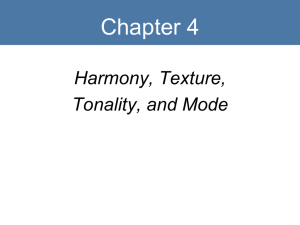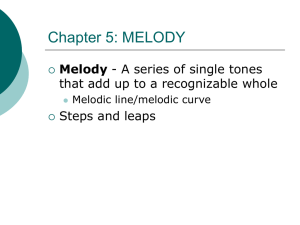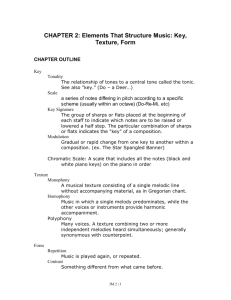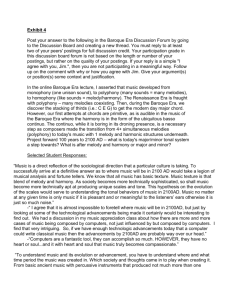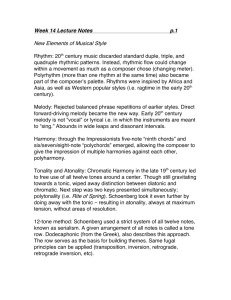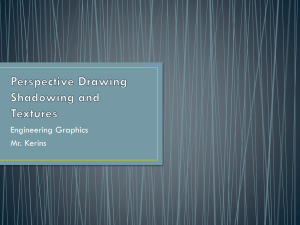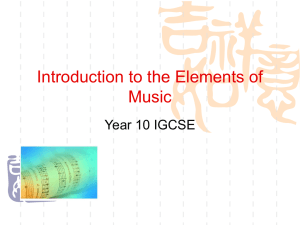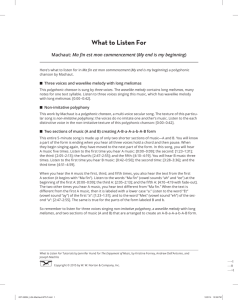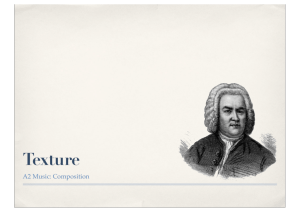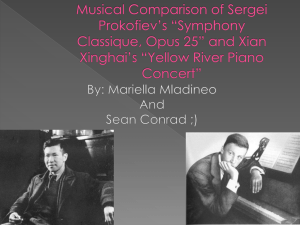Document
advertisement
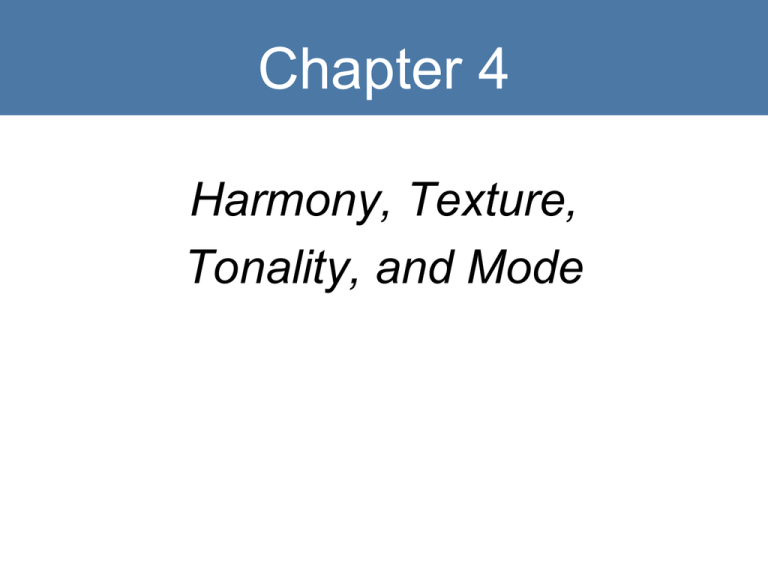
Chapter 4 Harmony, Texture, Tonality, and Mode Key Terms • • • • • • Chord Harmonize Harmony Consonance Dissonance Resolve Harmony • Prominent feature of Western music • Simultaneous pitches • Accompaniment for a melody Chords • Groupings of simultaneous pitches • A shifting sound background for melody Consonance • Sounds pleasing or at rest • Octaves are most consonant Dissonance • Sounds discordant, creates tension • Creates a desire to resolve to consonance Listening Exercises • Stability and instability • Tension and release • Consonance, dissonance, and resolution Key Terms • • • • • • Texture Monophony (monophonic) Homophony (homophonic) Polyphony (polyphonic) Counterpoint Imitative and non-imitative Texture The relationship between a melody and all other lines and figures that coexist with it Three Questions to Identify Texture • How many melodic lines do you hear? • Are all the lines equally interesting? • How similar or different are they? How many melodic lines do you hear? • How many different things are going on at one time? • Melody only? • More than one melody? • Any chords, figures, bass lines, or countermelodies? Are all the lines equally interesting? • Is there a foreground/background relationship? • Is there one main melody with clear patterns supporting it? • Is it hard to tell which is the main melody? How similar or different are they? • Same rhythms or different rhythms? • Same melodies or different melodies? Monophonic Texture • Only one line, nothing else Homophonic Texture • Two or more lines • One main melody with other parts supporting it (accompaniment) Polyphonic Texture • • • • Two or more lines All competing for your attention Same melodies = Imitative Different melodies = Non-imitative Imitative Polyphony Non-imitative Polyphony Listening Exercises • • • • Monophonic? Homophonic? Polyphonic? Imitative or non-imitative polyphony? Key Terms • • • • • • • Tonality, tonal Tonic Modality Mode Major mode, minor mode Key Modulation Tonality • Musical center of gravity • Feeling of a “home” pitch • A nearly universal phenomenon Tonal vs. Atonal • Tonal = Having sense of tonality • Atonal = Absence of tonality – Creates a wandering, unsettled quality – Used in some contemporary styles Tonic Pitch • The “home” pitch toward which other pitches lead • The first note of a scale (do re mi fa sol la ti do) • The most stable, fundamental pitch • The “at rest” note on which tonal melodies end Modality • Different ways of organizing the diatonic scale • Most Western music uses major and minor • Major scale = do re mi fa sol la ti do • Minor scale = la is the tonic, not do Major and Minor Modes Major vs. Minor • Major scales – Begin with two whole steps – End with a half step – Tend to sound brighter, happier • Minor scales – Begin with a whole step and a half step – End with a whole step – Tend to sound darker, sadder Major vs. Minor • Scale steps 3, 6, and 7 are a half step lower in the minor mode Key • Scales can begin on any note on the keyboard • Tonic pitch = Name of key • Scales can be major or minor – Pattern of whole and half steps must be observed Keys • Key of C major: major scale beginning on C • Key of D minor: minor scale beginning on D Modulation • • • • Changing to a different key Disrupts the pull toward the tonic Creates a new tonal center Creates variety, mystery, excitement, disorientation, etc. Listening Exercises • Tonal or atonal? • Major or minor mode? • Modulation?
